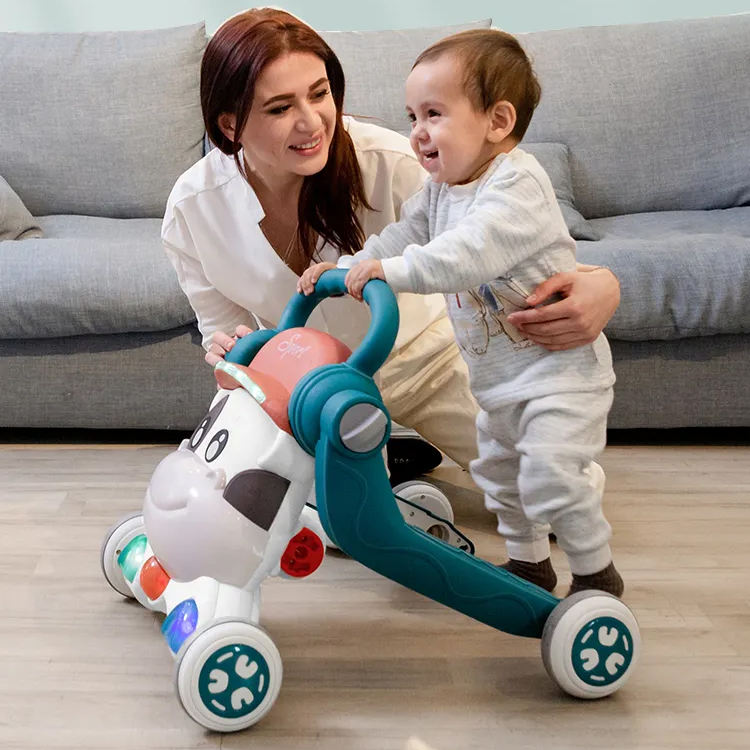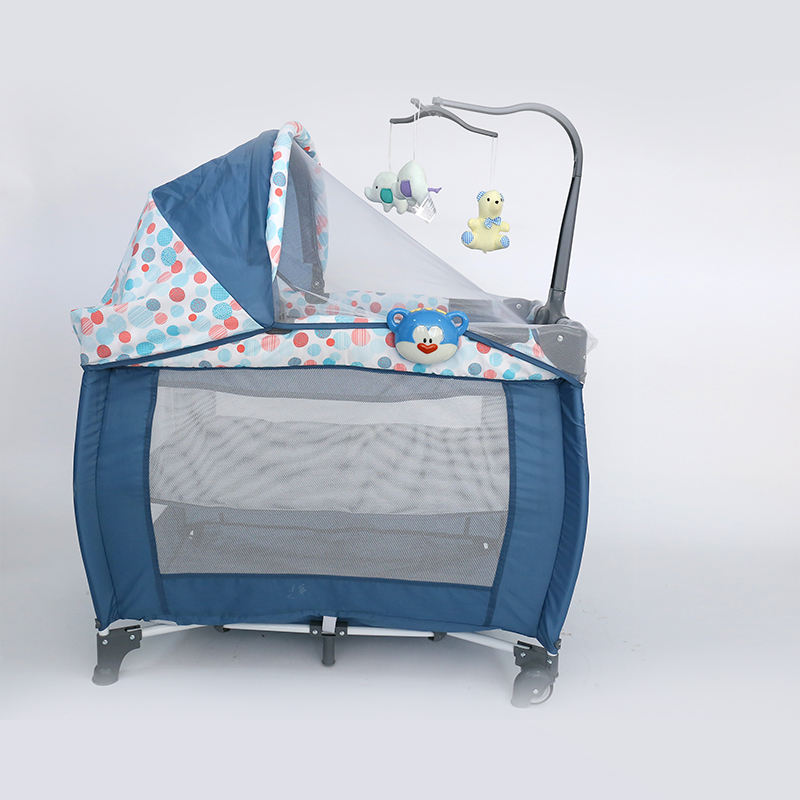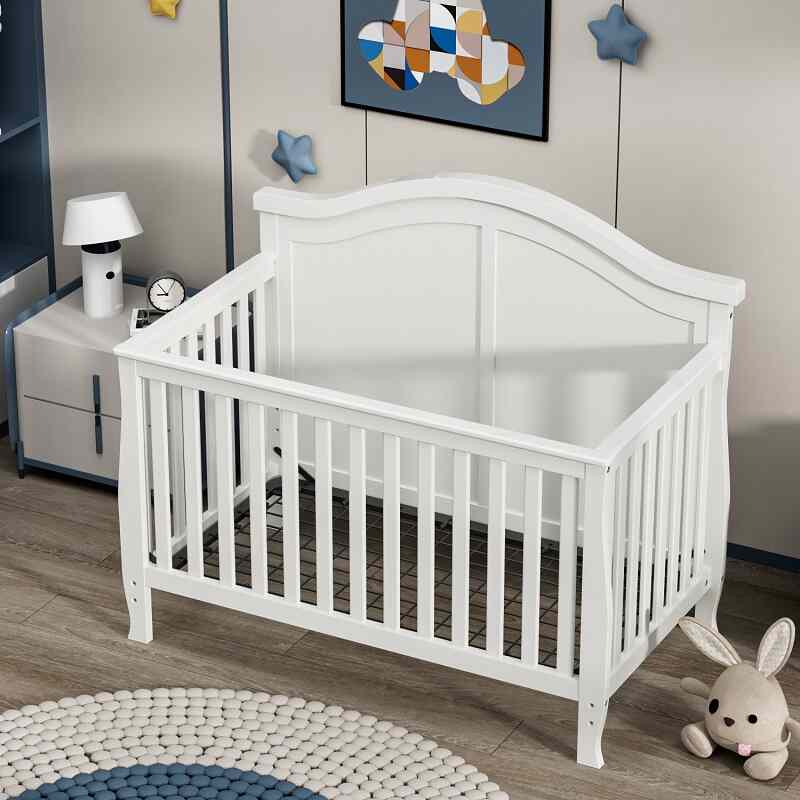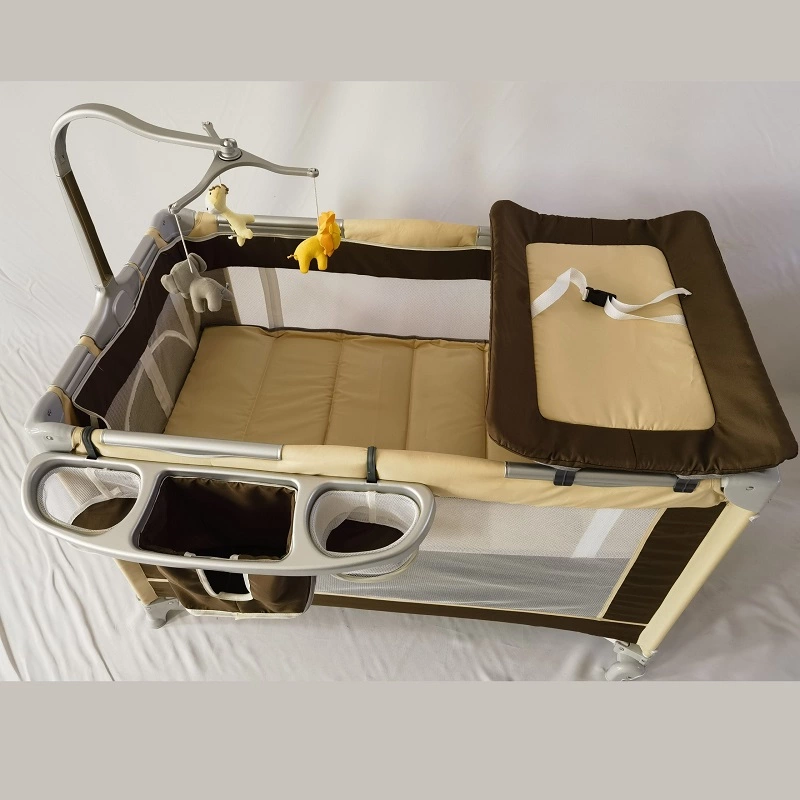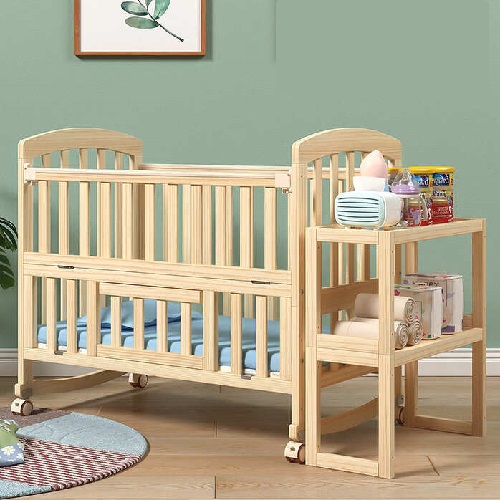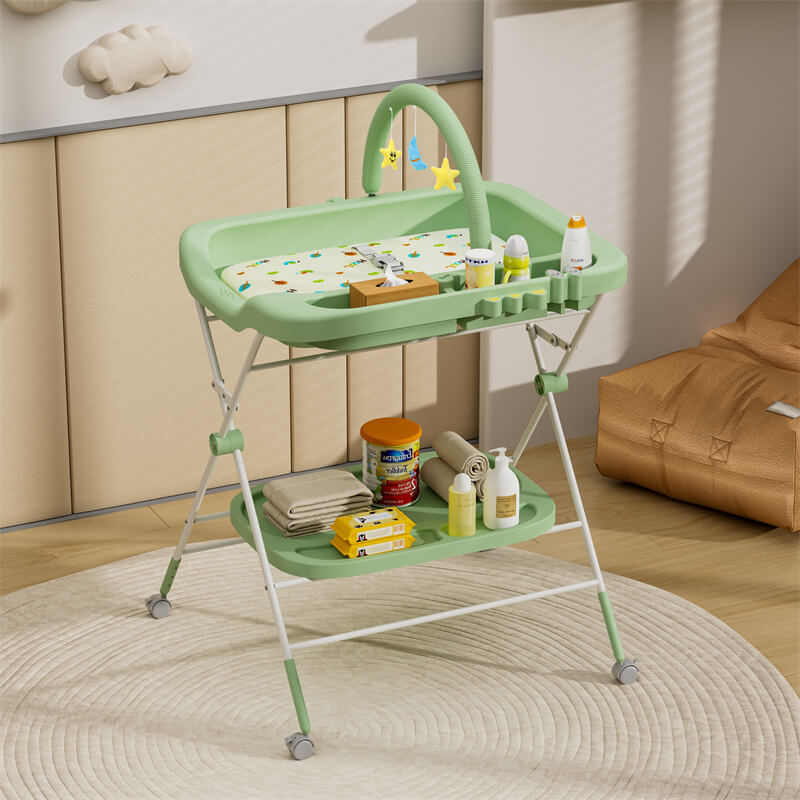Introducing your baby to a walker is a significant milestone in their development, marking the transition from crawling to taking their first steps. However, it’s essential to recognize the right time and approach to introduce it, ensuring it supports their growth healthily and safely. This comprehensive guide delves into the various aspects of using a ходунки, from identifying the signs that your baby is ready to walk, through the stages of learning to walk, to expert guidelines on the best age for a baby to start using a walker, providing a holistic view on facilitating your baby’s walking journey.
What Are the Signs Your Baby Is About to Walk?
1. Pulling Up: The first sign to look out for is when your baby starts to pull themselves up to stand. Babies often begin by pulling themselves up to a standing position using furniture or other objects for support. This demonstrates increased strength in their legs and a desire to be upright.
2. Cruising: Once they can stand, babies may start “cruising” along furniture or other stable objects, holding on for support as they move sideways. This helps them practice weight shifting and balance.
3. Improved Balance: You may notice your baby becoming more stable while standing, with less wobbling or swaying. They may also start to experiment with shifting their weight from one foot to the other.
4. Squatting: Babies may start squatting down from a standing position and then pulling themselves back up. This demonstrates increased leg strength and control.
5. Hand-Held Walking: Some babies may begin to take steps while holding onto an adult’s hands for support. They may initiate this themselves or may follow your encouragement to try walking.
6. Standing Alone: Gradually, babies will start to let go of support and stand independently for brief moments before sitting back down or grabbing onto something for stability.
7. Testing Balance: Babies might start to lift one foot off the ground while standing, attempting to balance on just one leg. This shows growing confidence in their ability to support themselves.
8. Motor Skills Development: Overall improvement in gross motor skills, such as crawling, climbing, and pulling up, may indicate that your baby is getting closer to walking independently.
What Are the Stages of a Baby Learning to Walk?
Pre-Walking Stage (0-8 months)
During the pre-walking stage, babies embark on a critical phase of physical development. At this juncture, their focus is primarily on building the foundational skills necessary for walking, a complex motor activity that requires coordination, strength, and balance.
Babies instinctively engage in movements such as kicking, a reflexive behavior observed even in newborns, which serves as an early exercise for their lower limbs.
Furthermore, as infants become more curious and exploratory, they may instinctively push against surfaces with their feet, whether it be the mattress during tummy time or the floor while lying on their backs.
As they progress through the pre-walking stage, babies may also demonstrate a growing ability to bear weight on their legs, albeit with assistance from caregivers. Supported by loving hands or secure baby gear, such as bouncers or activity centers, infants gradually acclimate to the sensation of standing upright and bearing their weight.
Pulling Up (8-10 months)
As babies progress into the pulling-up stage, a significant leap in their physical development becomes evident. At this juncture, many infants begin to demonstrate newfound strength and coordination as they pull themselves up to a standing position using nearby furniture, crib rails, or other stable objects for support.
Through trial and error, infants learn to grasp onto the edges of furniture or crib rails and exert upward force, gradually hoisting themselves into an upright position.
Once standing, babies often display a sense of triumph and curiosity, eagerly surveying their surroundings from this newfound vantage point. This vertical exploration opens up new avenues for sensory experiences, allowing babies to interact with objects at eye level and engage in novel forms of play and discovery.
Cruising (9-12 months)
At this juncture, infants often demonstrate a remarkable advancement in their mobility skills as they engage in the practice of “cruising” – a term used to describe the act of moving sideways while holding onto furniture, walls, or other stable objects for support.
Once they have mastered the art of standing upright, infants eagerly seize upon the opportunity to explore their surroundings from a more elevated perspective. By grasping onto nearby surfaces and propelling themselves forward.
As babies shift their weight from one handhold to another, they engage in a delicate balancing act. This process of weight shifting strengthens the muscles of the legs, core, and upper body, enhancing their overall stability and control while upright.
By practicing the repetitive motion of moving sideways while maintaining balance, babies lay the groundwork for the complex coordination required to take independent steps.
Assisted Walking (10-14 months)
During this phase, infants begin to experiment with taking their first steps with the support of caregivers or using push toys for stability.
Assisted walking often begins with babies grasping onto an adult’s hands for support, eagerly pulling themselves upright and tentatively venturing forward. With the reassuring presence of a caregiver, they take their initial steps, testing the limits of their newfound mobility.
In addition to seeking support from caregivers, babies may also utilize push toys or other assistive devices to aid in their walking endeavors. These toys provide a stable base of support, allowing infants to practice their balance and coordination as they push themselves forward. By gripping onto handles and propelling the toy forward, babies engage in a form of locomotion that mimics the mechanics of walking, albeit with external assistance.
Despite their best efforts, babies may experience occasional setbacks and challenges as they navigate the complexities of assisted walking. It is not uncommon for them to take a few hesitant steps before losing their balance and either sitting down or reverting to crawling. These moments of trial and error are an essential part of the learning process, as babies gradually refine their motor skills and develop a greater sense of control and stability while upright.
Independent Walking (12-18 months)
During this period, infants transition from relying on external support to confidently navigating their surroundings on their own two feet.
In the initial stages of independent walking, babies may take a few unsteady steps as they adjust to the sensation of supporting their weight and maintaining balance without assistance. These early attempts are characterized by tentative movements and occasional wobbling.
Over time, they may begin to take longer strides and navigate obstacles with increasing ease.
Despite their newfound independence, babies may still revert to crawling for longer distances or in situations where they feel less secure. However, as they gain more experience and confidence in their walking abilities, they become less reliant on crawling and increasingly prefer walking as their primary mode of transportation.
Refinement and Mastery (18-24 months)
During the refinement and mastery stage, toddlers continue to refine their walking skills and solidify their mastery over this fundamental form of locomotion.
With each step, they become more attuned to the nuances of their body mechanics, making subtle adjustments to their posture, stride length, and foot placement to optimize stability and efficiency. Through this process of self-correction and refinement, toddlers gradually develop a more confident and fluid gait, characterized by smoother movements and improved control.
By the age of two, most toddlers have achieved a remarkable level of proficiency in walking, allowing them to navigate their environment with ease and agility.
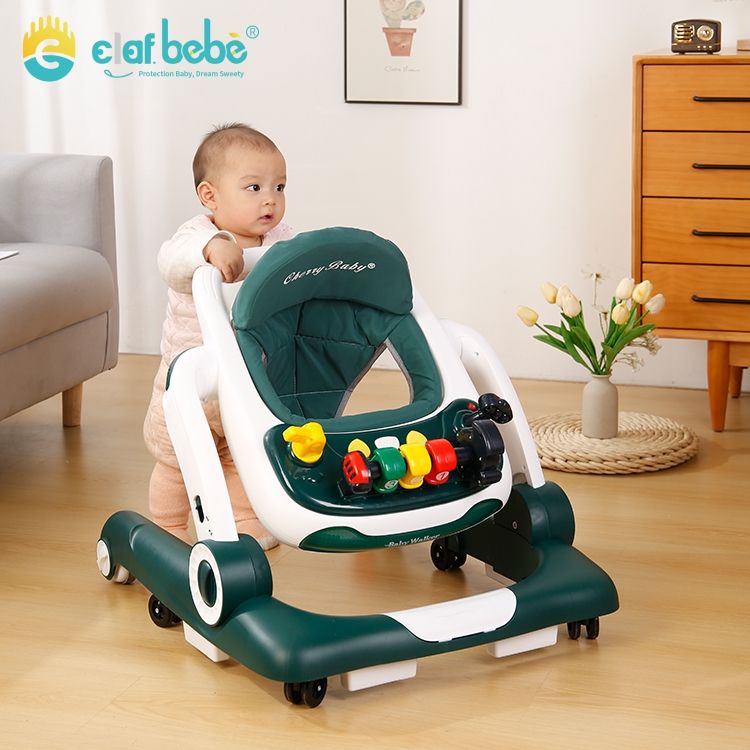
What Helps Babies Learn to Walk?
One of the most effective ways to do this is by giving them ample floor time. Floor time allows babies to practice crawling, standing, and walking in a safe environment. Encouraging movement through play, such as placing toys just out of reach, motivates them to move and explore different forms of mobility.
Another method is by holding their hands and helping them walk, which can give them the confidence to take steps without support.
Providing toys that promote standing and walking, such as baby walkers and baby push walkers, can also be beneficial. These toys encourage babies to stand and take steps, offering support and stability as they learn to walk.
The Best Age to Use a Baby Walker
Pediatricians and child development experts generally recommend that parents wait until their baby shows clear signs of being ready to walk before introducing a baby walker. Typically, this readiness is observed around the age of 6 to 10 months. However, it’s important to note that every baby develops at their own pace, and some may not be ready for a walker until later.
Experts caution against introducing an infant walker too early, as it can potentially hinder the development of the necessary muscle strength and coordination needed for walking.
The consensus among professionals is that if parents choose to use a walker, it should be used sparingly and under close supervision. The walker should be used on a flat, even surface away from any stairs or pools, and don’t use it for too long every day. This ensures that the baby still has plenty of opportunities to practice walking independently and develop the necessary skills without reliance on the walker.
Comparison of Different Types of Baby Walkers
Традиционные детские ходунки
Description: Traditional baby walkers typically consist of a frame with a seat suspended between wheels. Babies sit in the seat and use their feet to propel themselves forward, aided by the wheels.
Плюсы
- It provides mobility for babies who are not yet able to walk independently.
- Can entertain babies with toys and activities attached to the walker.
Минусы
- Safety concerns: Traditional walkers have been associated with accidents such as falls down stairs, tipping over, and reaching hazardous objects.
- May hinder development: Some research suggests that a long time to use walkers can delay motor development by discouraging crawling and pulling up to stand.
Ходунки для перехода из положения сидя в положение стоя
Description: Sit-to-stand walkers are designed to transition with a baby’s development. They typically start as activity centers with a removable seat for supported sitting and can be converted into push toys for toddlers learning to walk.
Плюсы
- Versatile: Can be used as both stationary activity centers and push toys.
- Encourages different stages of development: Supports sitting, standing, and walking.
Минусы
- May still pose safety risks if used as walkers before a baby is ready to walk independently.
- Costlier than traditional walkers due to added features and versatility.
Push Walker(or Push Toys)
Description: Push toys are toys with handles that babies can use for support as they practice walking. These toys typically have wheels that allow babies to push them along as they walk.
Плюсы
- Encourages natural walking motion: Push walkers promote proper walking mechanics by allowing babies to push them forward while standing.
- Safe: Push walkers do not have the same safety concerns associated with traditional walkers since babies are not seated in them.
Минусы
- Limited in terms of entertainment features compared to traditional walkers.
- May not provide as much stability as other types of walkers.
Stationary Activity Centers
Description: Stationary activity centers are stationary structures with a variety of toys and activities attached to them. Babies can play with toys while standing or sitting in a stationary position.
Плюсы
- Encourages development: Provides opportunities for babies to explore and engage with toys while standing.
- Safer alternative: Eliminates the risks associated with walkers since babies remain stationary.
Минусы
- Does not provide mobility for babies who are not yet able to walk independently.
- May not be as engaging for babies who enjoy moving around.
What’s the Ideal Duration for a Baby to Spend in a Walker?
The duration a baby spends in a walker is a critical consideration for their safety and developmental progress. Experts recommend limiting walker use to no more than 30 minutes a once. This restriction is crucial to prevent overreliance on the walker for mobility, which can impede the development of the muscle strength and coordination required for independent walking.
Alternating toddler walker use with other forms of play and mobility practice can offer a balanced approach to supporting your baby’s journey to walking independently.
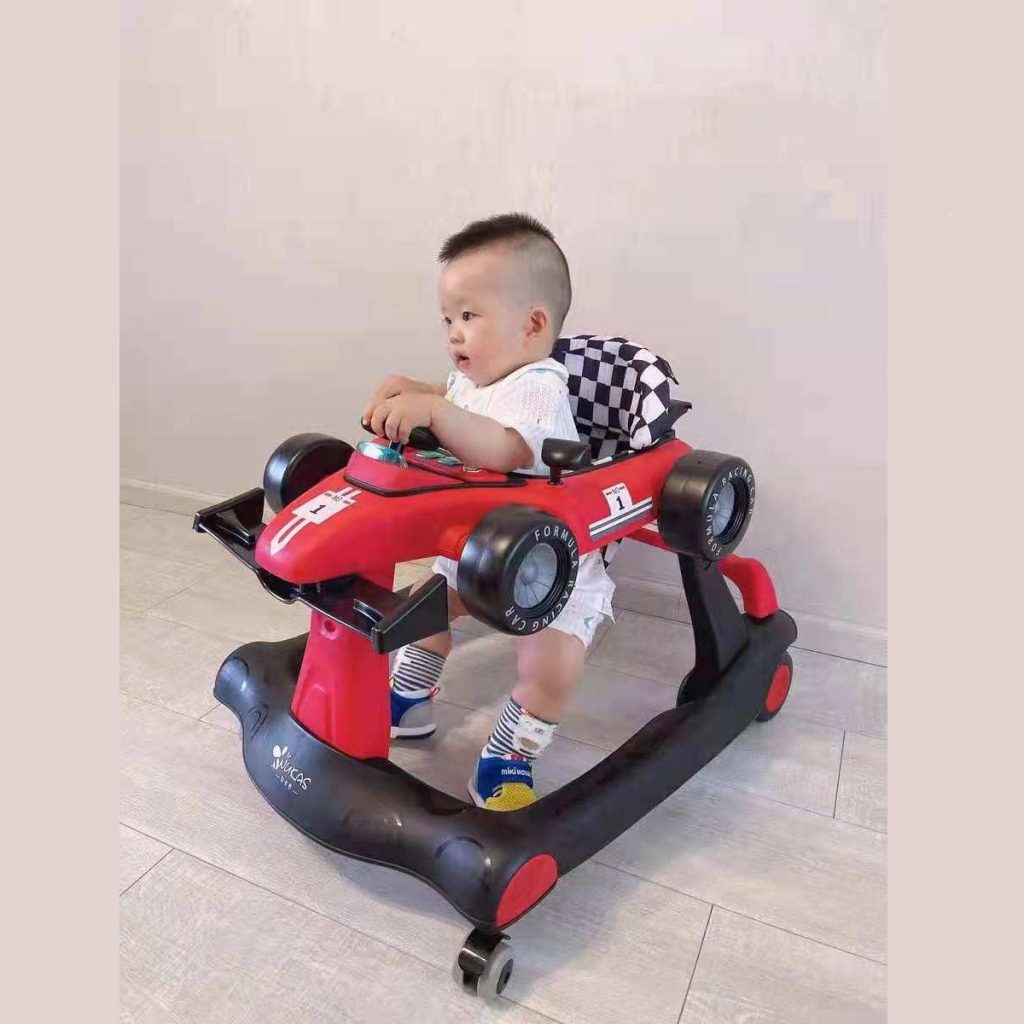
Alternatives to Baby Walkers
Encouraging Natural Development Through Tummy Time and Floor Play
Placing babies on their tummies while they are awake and supervised helps strengthen their neck, back, and arm muscles. It also encourages them to lift their head and develop the coordination needed for crawling and eventually walking. Additionally, floor play allows babies to explore their surroundings and practice rolling, reaching, and grasping, all of which are important for overall motor development.
Using Stationary Activity Centers as Alternatives
These centers typically feature a variety of toys, activities, and interactive features designed to engage babies’ senses and promote development. Babies can sit or stand in these centers and interact with toys, spinners, mirrors, and other elements that encourage exploration and sensory stimulation. Stationary activity centers offer many of the same benefits as walkers, such as entertainment and engagement, without the risks associated with mobility.
Use a Safety Playpen to Let Your Baby Explore Freely
Манежи, also known as play yards or portable cribs, provide a safe and contained space for babies to play and explore. They typically feature mesh sides and a padded bottom, creating a secure environment where babies can move around freely without the risk of wandering into hazardous areas. Playpens are versatile and can be used both indoors and outdoors, making them convenient for caregivers. Babies can engage in various activities within the playpen, such as playing with toys, practicing rolling and crawling, and interacting with caregivers, promoting physical and cognitive development.
Parental Interaction and Support
Caregivers can engage in activities such as gentle bouncing, supported standing, and guided walking practice to help babies build strength, balance, and coordination. Using toys, rattles, and other interactive objects can capture babies’ interest and motivate them to explore movement.
Заключение
In conclusion, the journey to walking is a crucial development stage for babies, filled with excitement and milestones. While baby walkers can seem like an attractive tool to support this journey, it’s essential to approach their use with caution, guided by pediatricians’ advice and child development experts. Encouraging natural progression through supportive activities and creating a safe, stimulating environment will ensure that babies develop the skills they need to walk confidently and safely.
Рекомендуемые статьи по теме:


